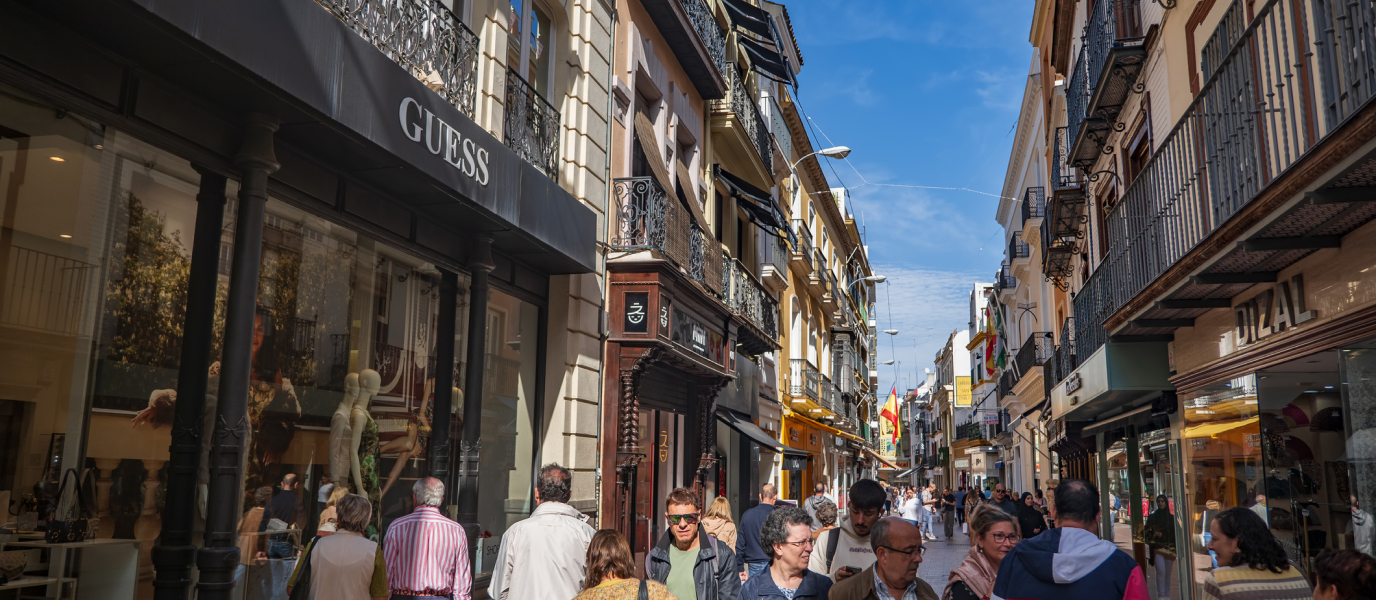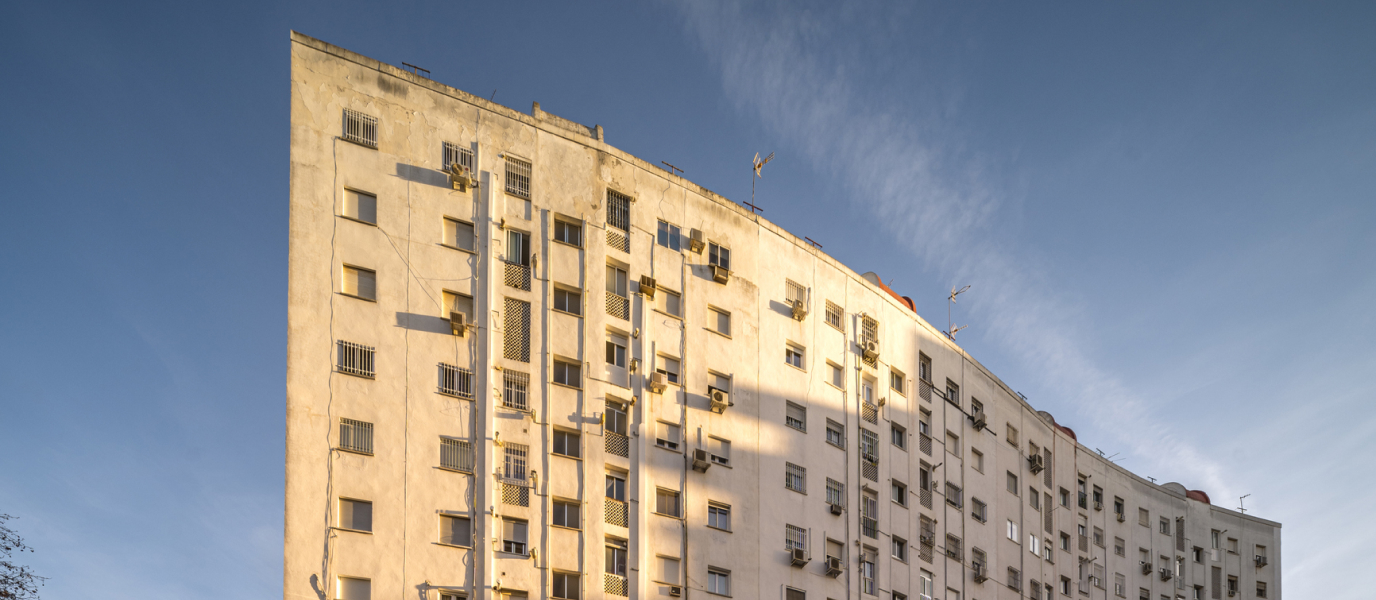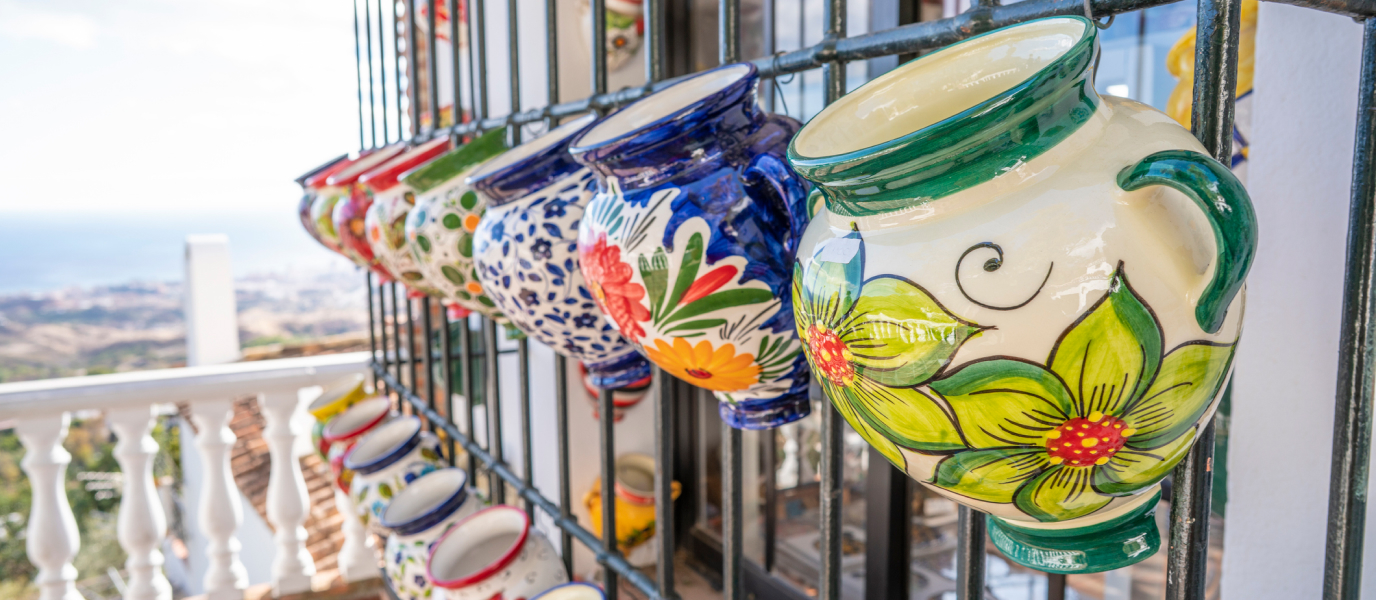The pedestrianised stretch of Calle Sierpes is the commercial heart of Seville. Since the fifteenth century, it’s been an important centre of trade, home to blacksmiths, cobblers and artisans.
This traditional, bustling street, today plays host to some of the city’s most important events. It is part of the Official Route for Semana Santa (link interno), running from the Plaza de la Campana to the Plaza de San Francisco. At the end of the shopping day, it becomes a place for relaxed chats in its bars, cafés and bakeries.
An iconic spot in the area is the La Campana Patisserie, just off the Plaza de San Francisco. Founded in 1885, it conserves its Modernist style with wooden countertops, multi-coloured plasterwork, plant motifs and the original floor. You’ll have a tough time deciding between its famous yemas (egg yolk pastries), meringues, lenguas de almendra (almond pastries), candied fruits and primor de hojaldre (puff pastries). They’re all made daily, with the same recipes they’ve been using for more than 100 years.
In the summertime, large canopies are suspended from the rooftops to protect Calle Sierpes from the suffocating heat. But, when evening falls, the street comes back to life. Human statues, mimes and buskers come out to play, and animate evenings on the street.
Shopping in the centre of Seville
You can’t visit Seville without going shopping on Calle Sierpes (link interno). You can get your hands on the typical souvenirs, authentic flamenco dresses, embroidery and leatherwork that’s mixed in amongst the big clothes and shoe chains.
In fact, the main commercial zone is contained in the triangle formed by the squares of La Campana, San Francisco and Plaza del Salvador. Although Calle Sierpes is the most famous street, neighbouring ones like Tetuán, O’Donnell, Rioja and Velázquez are also pedestrianised and overflowing with shops.
Big local names like Vitorio & Luchino, Adolfo Domínguez and Purificación García neighbour flamenco dress shops like Luchi Cabrera and Elena Bernal, and all of the brands from the Inditex group. Amongst all those, you’ll find shops with incredibly long histories that will take you back in time.
They’ve survived thanks to the products they specialise in. The Sombrerería Maquedano, for example, is a hat shop that’s stood on the corner of Calle Sierpes and Rioja since 1908. In this Modernist establishment, there’s no counter, just two seats and a large mirror. Other than that, you’ll only see the characteristic Maquedano boxes. This is Seville’s only hat shop and it has more than 1,000 products in its catalogue, from typical caps to Feria sombreros.
Another shop front that stands out is the Papelería Ferrer, the oldest stationer’s in Spain. It was founded in 1856 when a Catalan family arrived in Seville to sail off to the Americas but ended up staying and opening this stationer’s. It’s perfectly preserved, just as it was left by the founders, with the original floors and countertops. It attracts huge numbers of local and foreign customers. It has over 14,000 items on offer.
Continuing down the street, you’ll come across wooden panel that houses six large clocks, each telling the same time. This is El Cronómetro, a clockmakers that was opened in 1901 by a family who had come to Seville from Levante (Eastern Spain). The wooden panel on its façade was put up for the Ibero-American Exposition of 1929, and over time it has become a symbol of the brand. But, when you pass through the doors you’ll enter a luxurious, very twenty-first-century world, that’s quite the contrast to the exterior.
Legends of Calle Sierpes
A shopping street for centuries, it used to be called Calle Espaderos, as it was once home to a fellowship of sword (espada) makers. By the time it made an appearance in Cervantes’ ‘El Rufián Dichoso’, it was known as Calle de la Sierpe. Cervantes himself was actually imprisoned on this very street, in Seville’s Royal Prison.
The name of this street being changed to Calle de la Sierpe has given rise to all kinds of legends. Some versions claim it was because this was once the home of the gentleman Don Álvaro Gil de la Sierpe. Others attribute it to the way the street twists and turns in a snakelike fashion, and some believe it comes from the snake that was the symbol of an apothecary that once stood on this street.
But perhaps the most far-fetched version is the one that goes that at the end of the fifteenth century, children started to go missing during the night. No one knew what was going on, until one day a fugitive prisoner claimed to know who was behind the disappearances and made Alfonso de Cárdenas, regent of the city, promise that he would grant him his freedom if he handed over the murderer. He made him put it down in writing, and then took him to the lair of a gigantic snake that had a dagger embedded in it. The bones littered around it left him in no doubt that this was the assassin. He had discovered and killed the monster when he escaped from prison through a tunnel that led to the sewers.
The snake was laid out on Calle Espaderos, and people from all over Seville came to see the street of the serpent.






































































